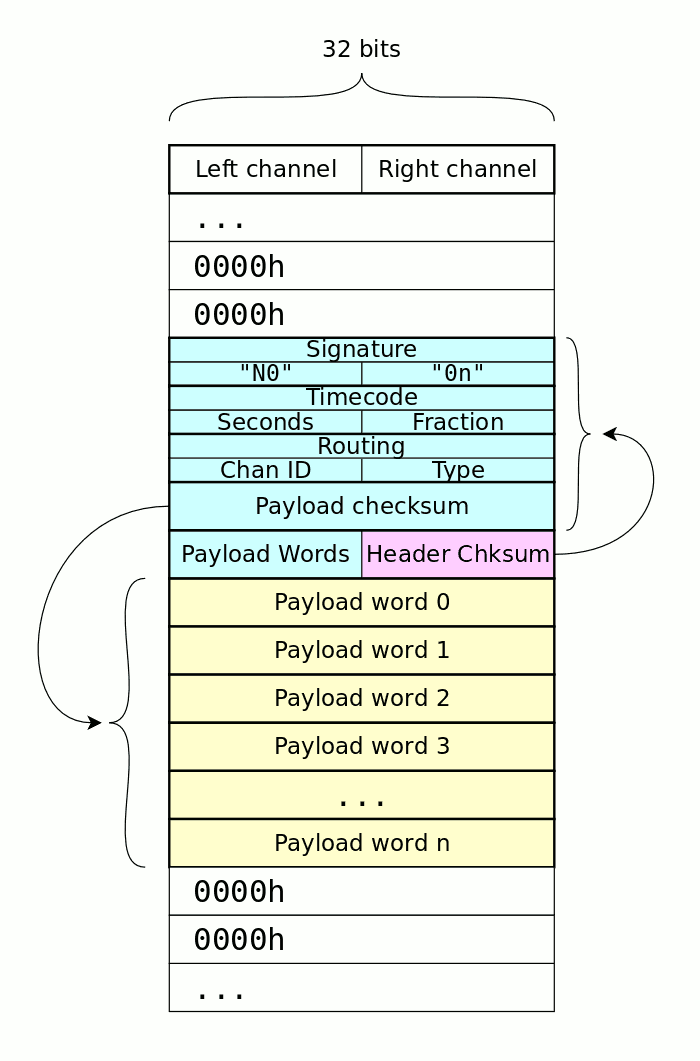n00n data are sequences of packets that can be embedded in a continuous stream, such as digital sound data, carried in a .WAV or over S/PDIF, or burned on a CD. That's why n00n is structured in words that are pairs of 16-bit values, mapped to left/right channels.
Transforming the packets to/from the continuous streams is not difficult, it's just a matter of proper "framing".
- The header has 32 constant bits for header alignment, backed by 16 bits of checksum, so that's 2^-48 chances of random sync.
- Then there is 32 bits more for the payload checksum that help confirm that the header is good if the payload is good.
This is a bit overkill when transmitting data over UDP packets for example but the format remains the same in any case.
When using a fixed bandwidth, continuous stream (such as S/PDIF or a high-speed serial link), packets are separated by at least one 0 word (32 bits), and more if/when there is temporal alignment. However the real timestamp is in the header and the stream should not be trusted for absolute timing, as it could be interrupted or tampered with. In fact, several simultaneous "recordings" of the stream could happen on different unrelated files, and the header's timestamp helps recover and realign all the streams so they can be remultiplexed. That's why negative timestamps are possible.

On the above diagram, the packet is surrounded by 0h padding, which is present in a "continuous stream". UDP datagrams however do provide the necessary framing so the padding is removed.
The payload checksum is filled in the header, which is then itself checksumed to protect the whole packet.
 Yann Guidon / YGDES
Yann Guidon / YGDES
Discussions
Become a Hackaday.io Member
Create an account to leave a comment. Already have an account? Log In.